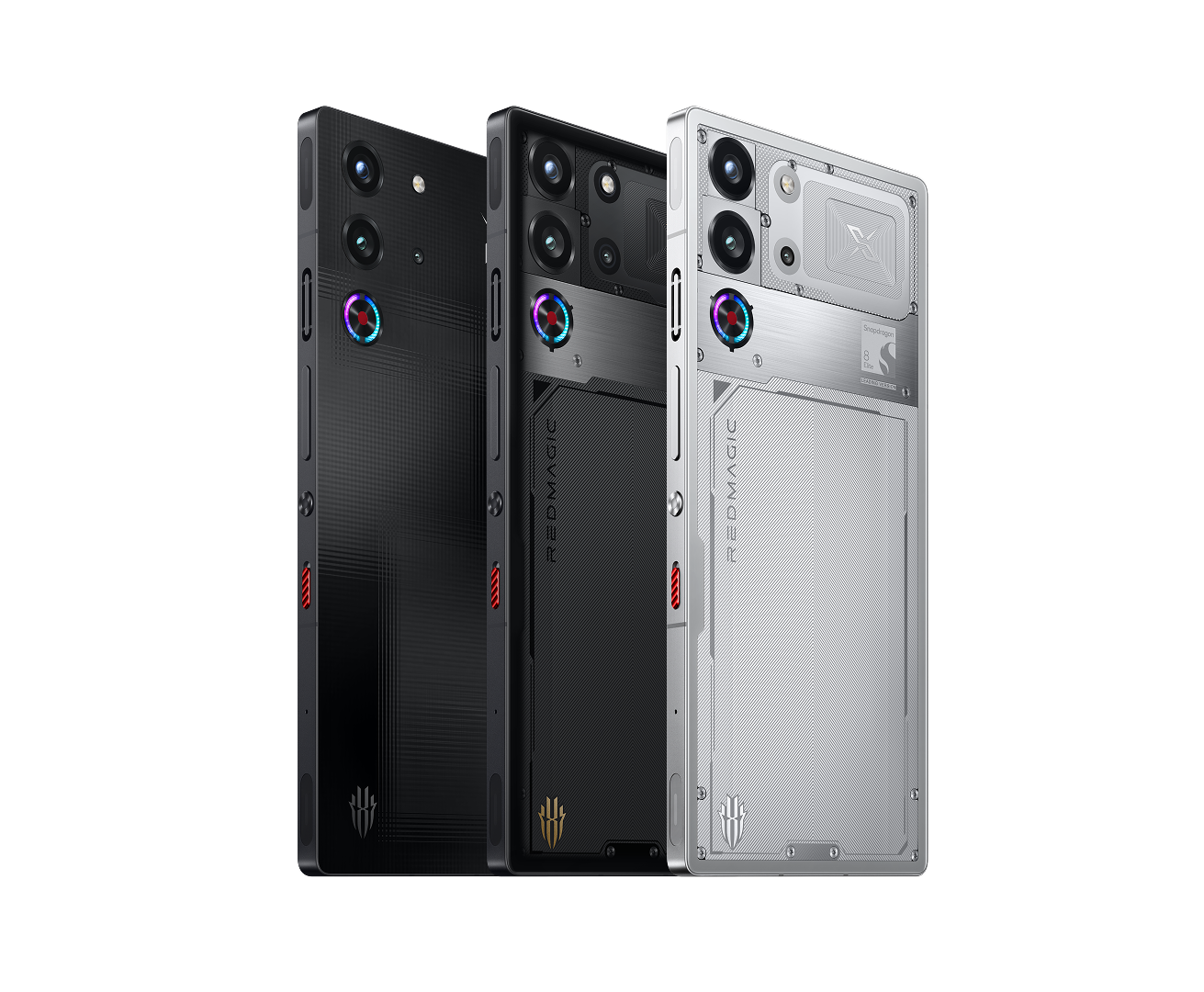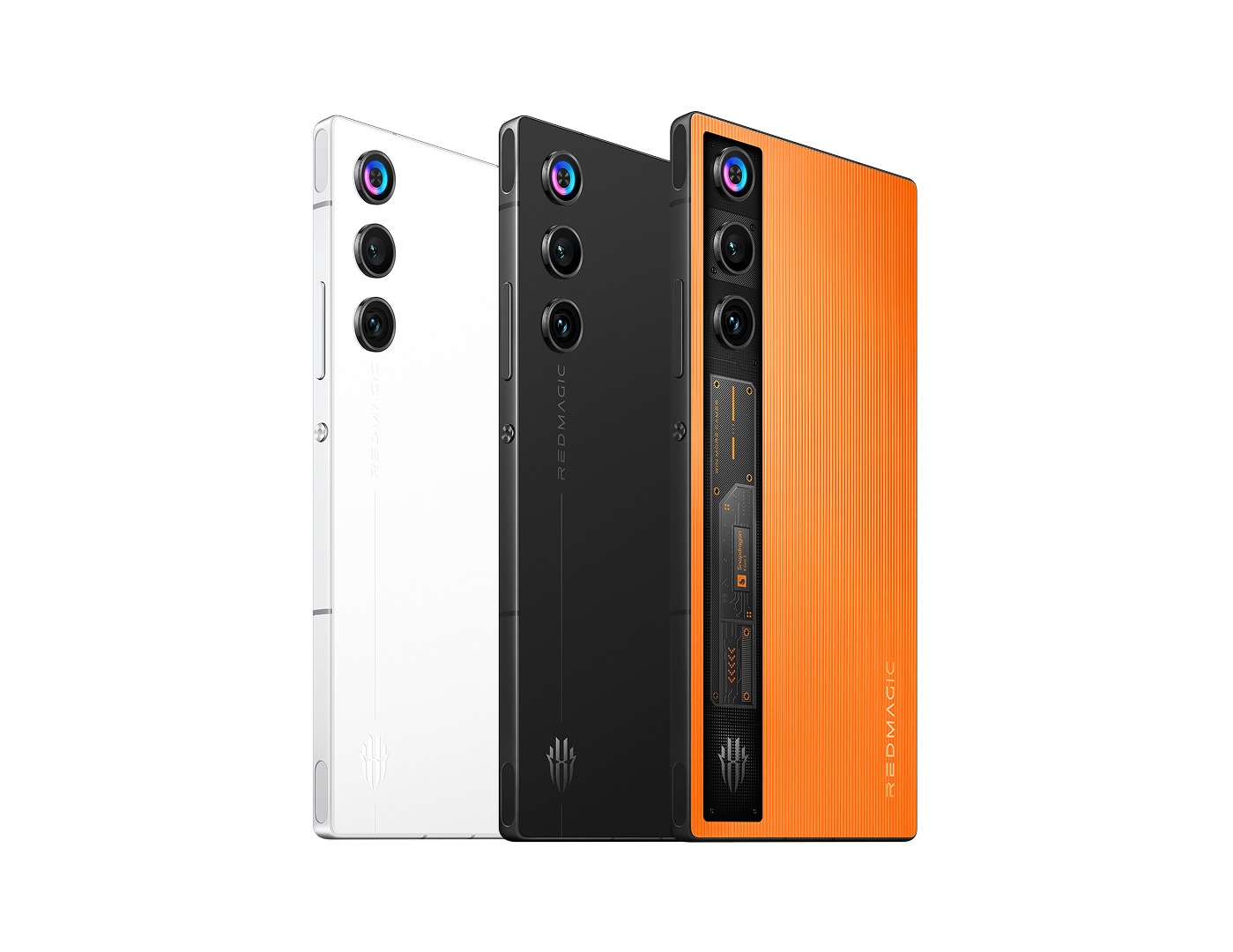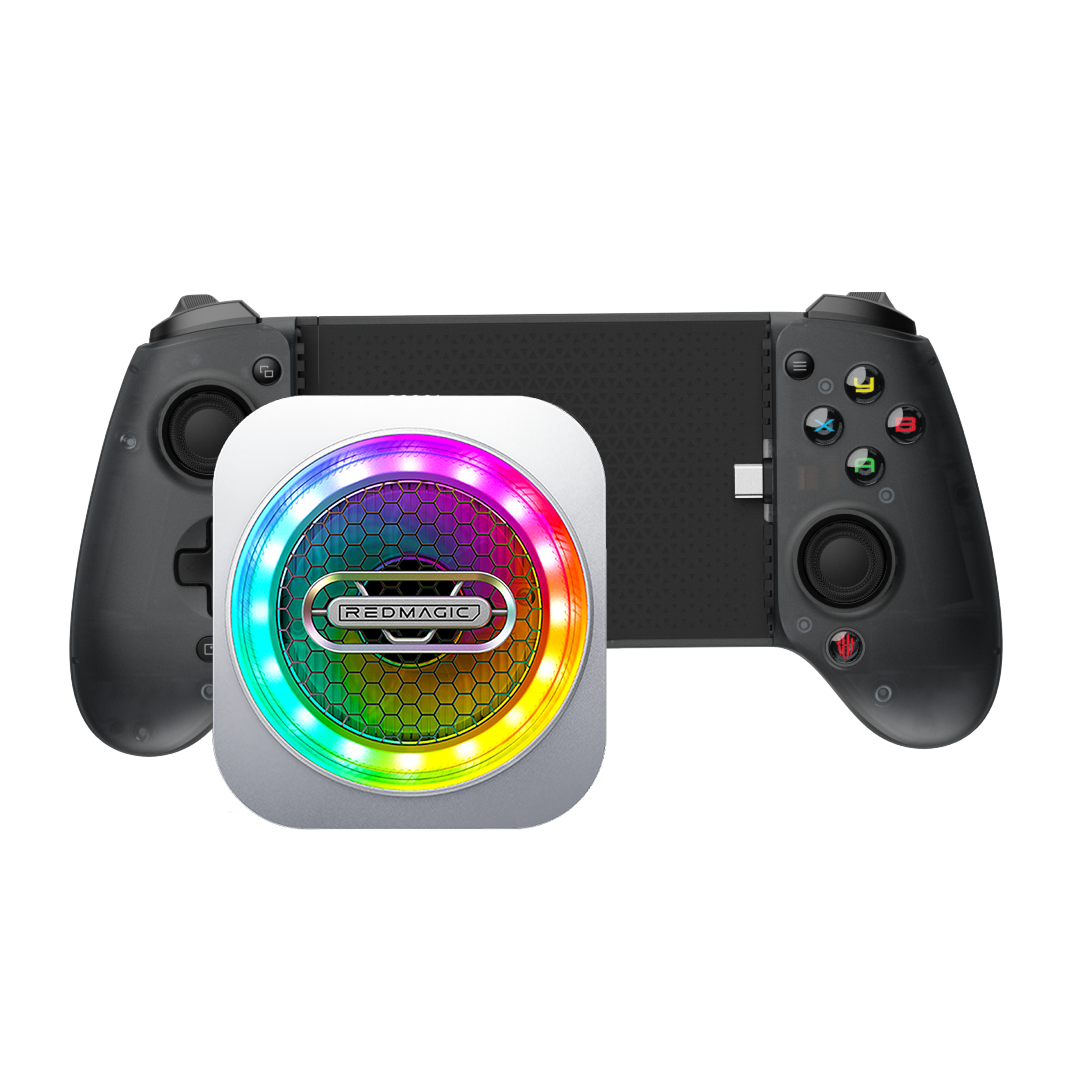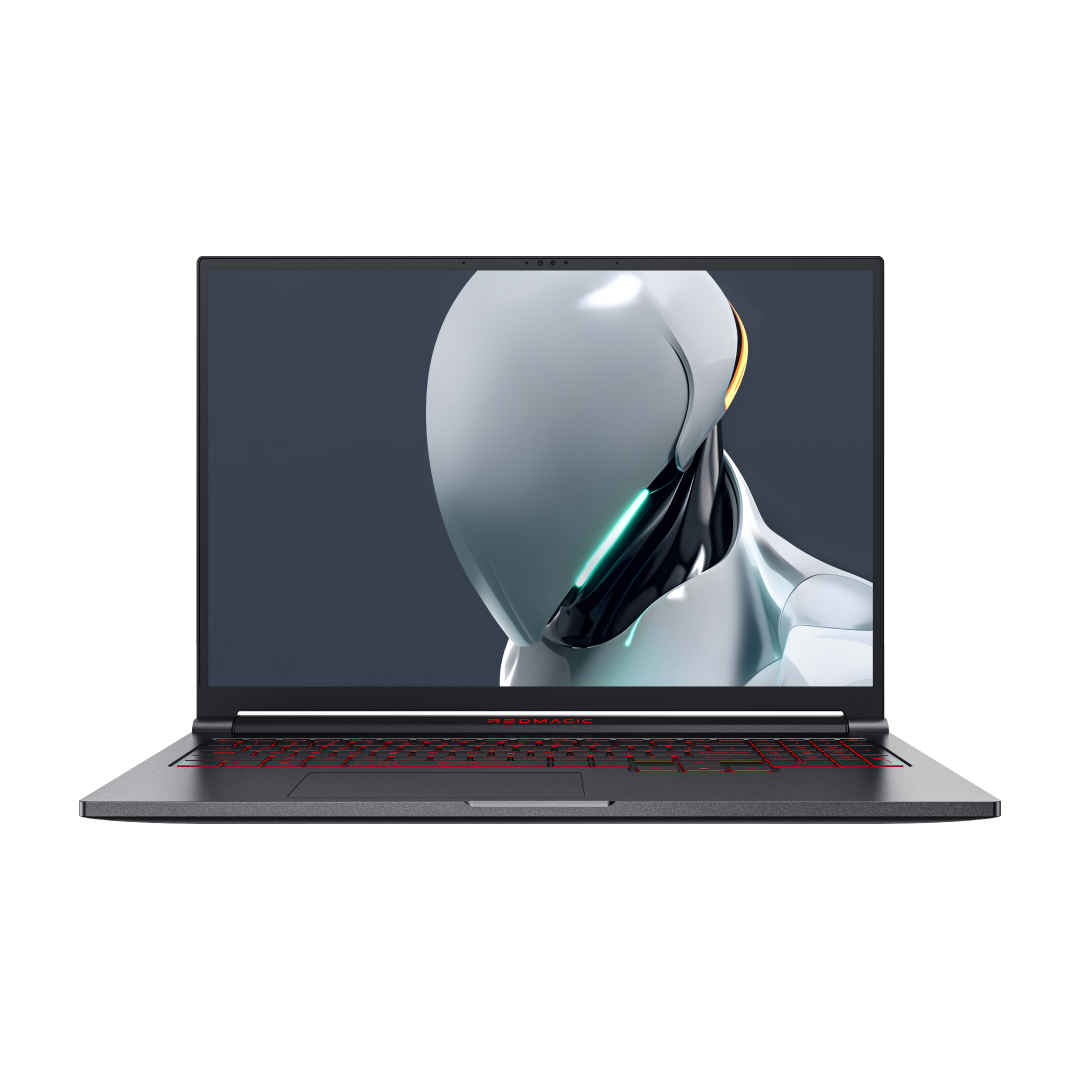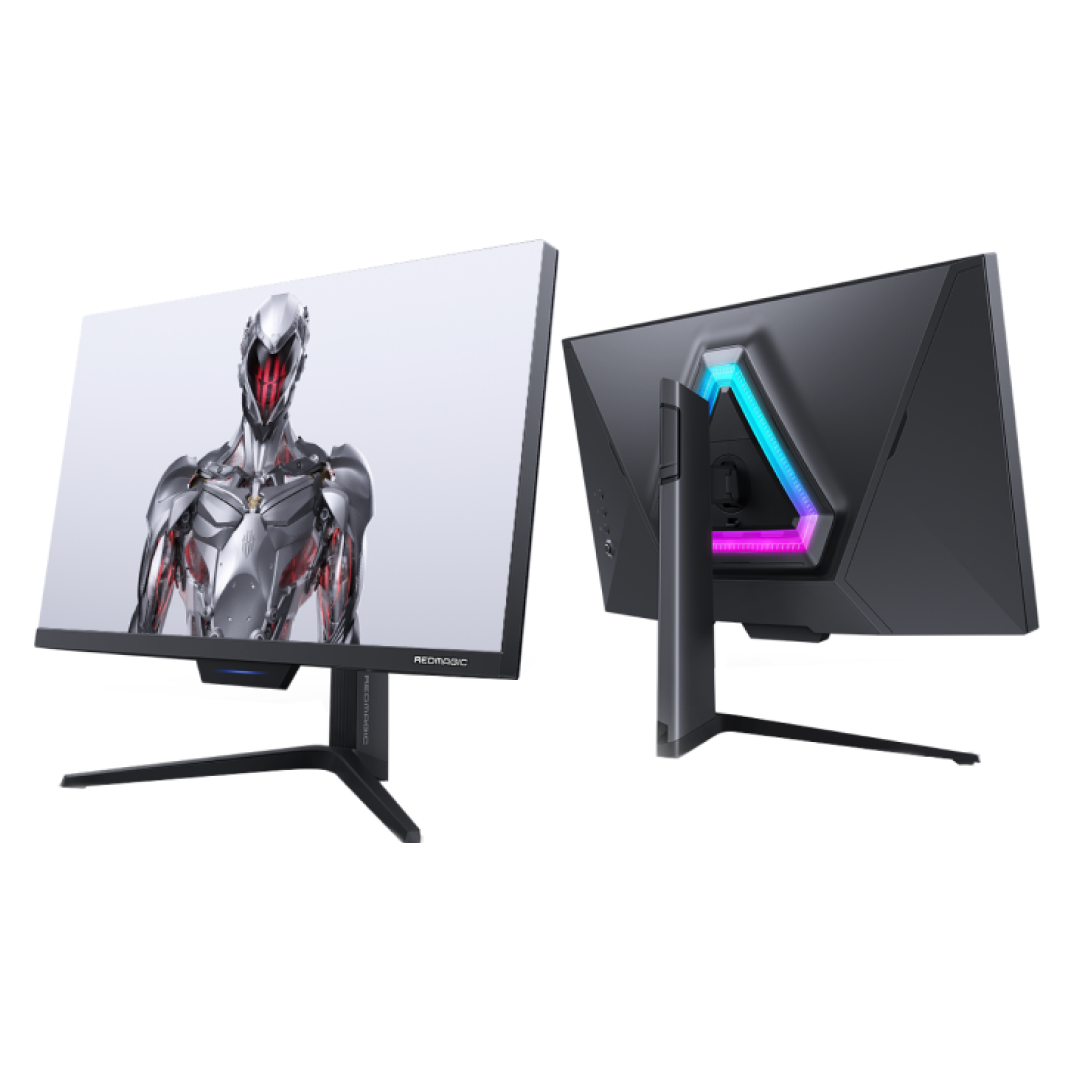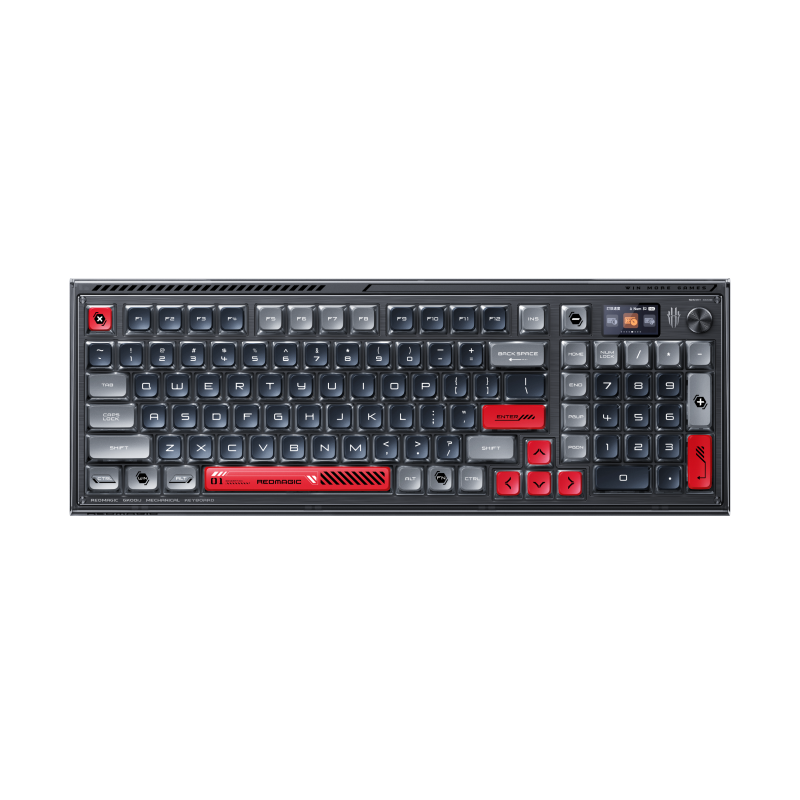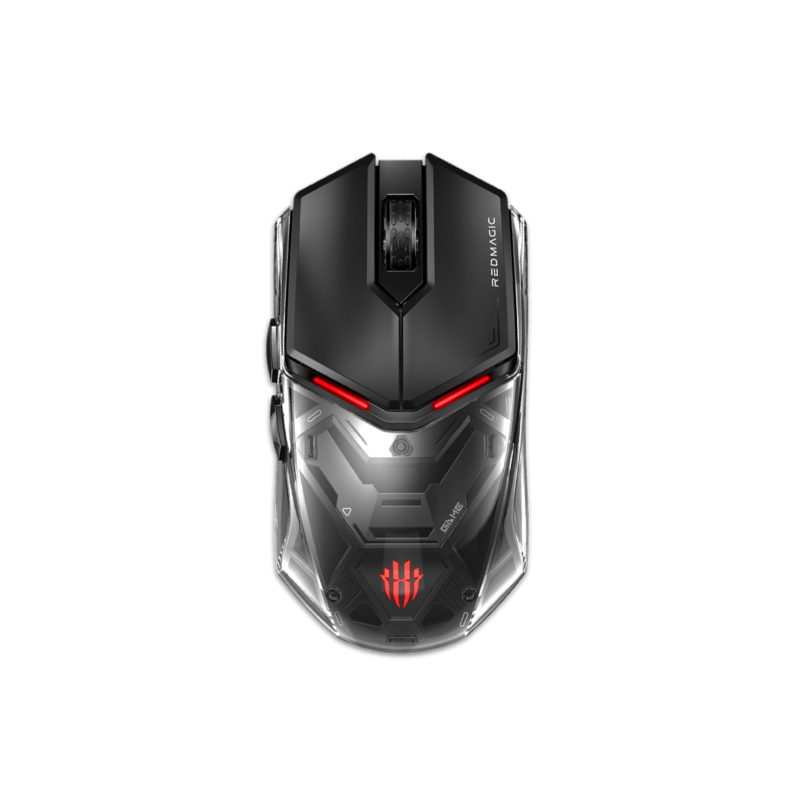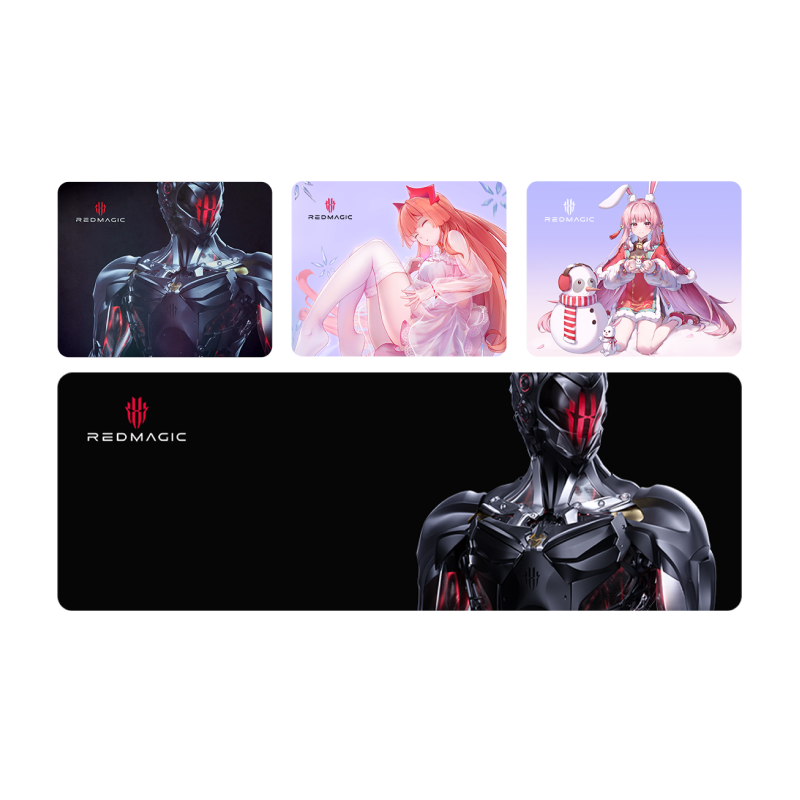
Despite all the changes between generations, REDMAGIC phones have maintained a relatively consistent design throughout. It remains the case here as the REDMAGIC 7 is a large, bulky device with a bold aesthetic that’s sure to turn heads - but in the right way?
That’s especially true on the Cyborg model I tested, where transparent glass on the back allows you to see some internal screws and the built-in fan. This kicks into life when charging and running demanding apps, doing a good job of preventing any overheating.
It’s helped by a new third fan grille, which works alongside existing vents on either side of the phone. I was concerned about unintentionally blocking this while gaming but it was never an issue.
Despite not being visible, Nubia has used this finish as an opportunity to highlight the REDMAGIC 7’s key specs - by literally printing them all over the back. It leaves you in no doubt that the Snapdragon 8 Gen 1 chip, 64Mp camera, 165Hz screen and 720Hz touch sampling rate are all on board.
Gaming enthusiasts may like this design, but it’s not something I’m a fan of. Alternatives are available in the form of Obsidian, Pulsar and Supernova finishes, although only the former has anything like an understated design.
Whichever you choose, a long glossy strip extends down the back of the of the phone. This is where you’ll find REDMAGIC branding, RGB lighting and a triple rear camera system - more on those later.
Impressively, Nubia has managed to get the cameras to sit almost flush with the back of the display. That means almost no movement when sitting flat on a table, although the phone is 9.5mm thick to make it possible.
Flipping the phone over reveals the same size display as its predecessor at 6.8in. Bezels here are a touch larger than on the 6S Pro, but they remain symmetrical. When regularly gaming in landscape mode, it makes a difference. Also, I doubt anyone is complaining about an 83.6% screen-to-body ratio.
The display is arguably the most crucial aspect of any phone and REDMAGIC phones have consistently produced impressive results. That explains why there are almost no upgrades to the REDMAGIC 7’s display – it remains a 6.8in, 1080x2400 AMOLED panel. I’d like to see the resolution increased to 1440p, but it’s not a priority – most Play Store games run at 1080p anyway.
A class-leading 165Hz refresh rate is still here, but the previous two generations of REDMAGIC handsets also have this feature. However, unlike some other phones, it’s not adaptive.
You’re limited to 60-, 90-, 120-, 144- or 165Hz, with no way to automatically switch between them. This also means the phone can’t drop below 60Hz to help preserve battery life where appropriate.
However, you do now get 720Hz touch sampling, one of the highest you’ll find on any phone. That makes it incredibly responsive – combined with silky-smooth 165Hz visuals, this could give you a crucial upper hand during online multiplayer gaming.
Indeed, it’s important not to be too harsh on Nubia here. The REDMAGIC 7’s display is still mightily impressive, offering great detail and an impressive range of vivid colours. Nubia says it can hit 708 nits at max brightness, but even the 508 I recorded makes it relatively easy to use outdoors.
The screen is great but I was underwhelmed with the quality of the stereo speakers, which were lacking in detail despite plenty of bass. This is still an improvement on the usual quality of built-in phone speakers though, and you can always connect wired or wireless headphones instead.
Despite starting at a mid-range price, Nubia always includes the latest and greatest Qualcomm chip in REDMAGIC handsets. In the case of the REDMAGIC 7, that’s the Snapdragon 8 Gen 1.
Qualcomm claims the move to 4nm process yields big performance improvements, but it’s marginal gains on flagship phones. It also, as you would expect, comes with support for 5G networks.
I can’t honestly say I noticed a difference compared to the 6S Pro, even with a mind-blowing 18GB of RAM on board. You’ll struggle to find anything that can cause even a moment’s hesitation, but these high-end specs should help with futureproofing, too.
Provided your internet connection is strong, it also means gaming on the REDMAGIC 7 is a delight. Whether you’re in the midst of combat on Call of Duty: Mobile, taking to the tracks on Real Racing 3 or controlling the world’s best footballers on FIFA Mobile, the experience is consistently top-notch.
What’s more, having a powerful built-in fan means the device never gets more than slightly warm. The sound it makes is noticeable, but it’s usually drowned out by the audio from the game.
Disappointingly, the REDMAGIC 7 has a smaller battery than both the 6S and 6S Pro – 4500mAh compared to 5050mAh. It sounds like a minor change, but it’s enough for battery life to become one of the phone’s main weaknesses.
Assuming you’re playing games every day, a single charge may not be enough to make it through a full day. At 165Hz, I recorded 7 hours and 55 minutes in Geekbench 4’s battery test (our usual PCMark test would not run). However, this is only a simple measure of screen-on time at a relatively low 120 nits of brightness.
In reality, you won’t get nearly as much real-world usage before needing to reach for the charger. One way to mitigate this is choosing a lower refresh rate, but you’re not buying a 165Hz phone to run it at 60- or 90Hz.
This battery capacity would be sufficient for a regular handset, but playing games is one of the most demanding things you can do on a phone. Considering how bulky the REDMAGIC 7 is, I expected more.
However, one area I can have no complaints about is charging speeds. The standard REDMAGIC 7 might not get the super-fast 135W from the Pro, but the 65W available here is still good.
From completely dead, I reached 65% in just 15 minutes using the adapter included in the box. At 30 minutes, the device was fully charged. There’s still no wireless charging here, but this is a worthwhile substitute.


